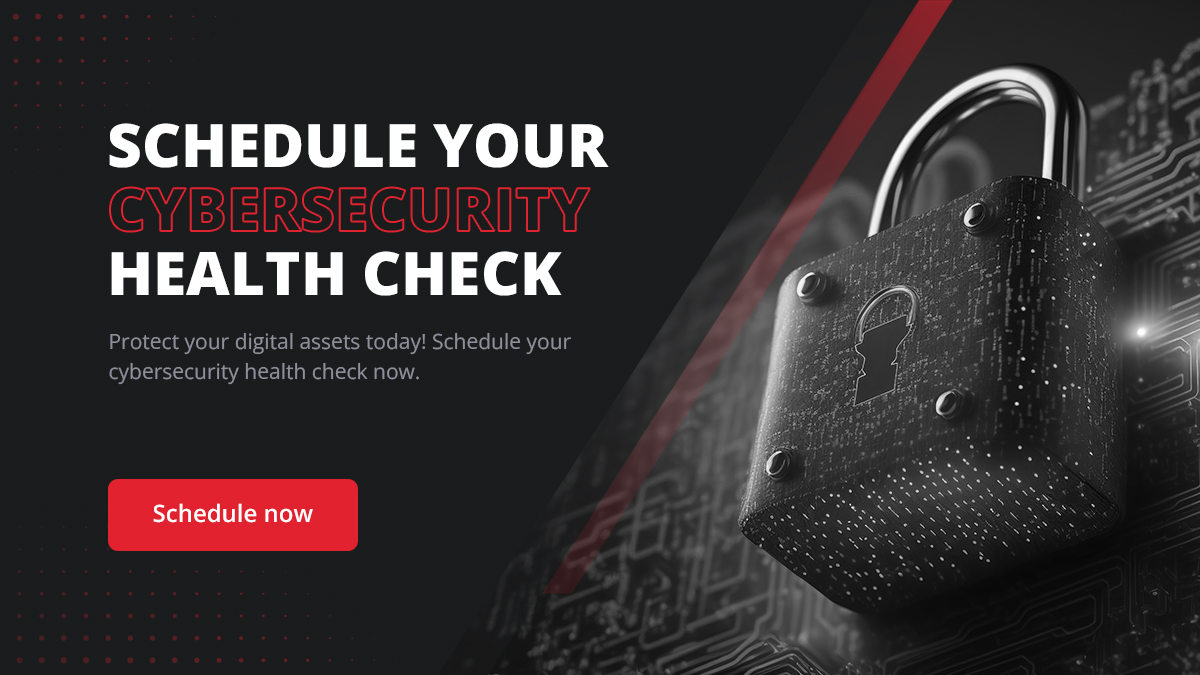What is a Bad USB Attack, and How Do You Prevent It?

A Bad USB attack is a cybersecurity threat where malicious code is embedded into the firmware of USB devices. Unlike traditional malware, which targets software vulnerabilities, Bad USB exploits the fundamental way computers trust USB devices, making detection and prevention challenging.
How does a Bad USB attack work?
How Attackers Compromise Systems Using This Attack
Bad USB attacks represent a sophisticated cybersecurity threat that leverages the inherent trust computers place in USB devices. By manipulating the firmware—the permanent software programmed into the read-only memory of USB devices—attackers can drastically alter the device's function. For example, what appears to be a standard USB flash drive could be reprogrammed to act as a keyboard. When connected to a computer, this rogue device can mimic keyboard input, executing pre-designed command sequences at a speed and with a level of discretion that would be impossible for a human.
This method allows cybercriminals to bypass traditional security defenses such as antivirus software and firewalls. Since the computer recognizes the device as a legitimate peripheral, like a keyboard, it authorizes the execution of whatever commands the device inputs. These commands can range from downloading and installing malware to creating new user accounts with administrative privileges, modifying system settings, or opening backdoors for future access.

History of Bad USB Attack
The Bad USB vulnerability was publicly disclosed in 2014 by security researchers Karsten Nohl and Jakob Lell at the Black Hat security conference. Their research, which can be accessed at BadUSB: On Accessories that Turn Evil, found a fundamental flaw in the design of the USB protocol itself. The vulnerability lies in how USB device firmware can be reprogrammed; there are no built-in safeguards to prevent unauthorized modifications to this firmware. This oversight means that virtually any USB device could be turned into a cyber weapon capable of executing a wide range of attacks.
The fundamental nature of the vulnerability means that any effective defense must involve both technological solutions, such as secure firmware and device authentication methods, and user awareness strategies to minimize the risk of connecting untrusted USB devices to sensitive systems.
What are the Types of Bad USB?
USB Rubber Ducky and Ducky Script

Perhaps one of the most infamous tools in the hacker arsenal, the USB Rubber Ducky, pretends to be a simple USB flash drive but acts as a programmable keyboard. Upon insertion into a USB port, it executes pre-loaded keystroke sequences at a speed far beyond human capability. These sequences can range from opening a command line to downloading and installing malware, all without the user's knowledge. The Ducky Script, a simple scripting language, enables attackers to craft complex payloads easily, making the USB Rubber Ducky a powerful tool for automating a wide range of malicious tasks.
USB Drive-by
USB Drive-by attacks exploit the AutoRun or AutoPlay features of operating systems, which were designed for user convenience. When a USB device is plugged in, the system automatically executes a program specified in the device's AutoRun configuration. Malicious USBs crafted for Drive-by attacks contain malware within their AutoRun files, leading to automatic installation upon connection to a computer. Although modern operating systems have restrictions or disabled AutoRun for USB devices, older systems remain vulnerable, and social engineering can trick users into manually executing malicious software.
Malicious Charging Stations (Juice Jacking)
Juice Jacking takes advantage of public USB charging stations, such as those found in airports, hotels, or cafes, which can be compromised to serve as conduits for malware delivery. When unsuspecting users connect their devices to charge, the compromised station can install malware or siphon data through the USB cable. This attack vector exploits the dual-use nature of USB ports for both data transfer and power supply, underscoring the risk of charging personal devices in untrusted locations.
USB Killer
The USB Killer is a nefarious device designed to physically damage hardware. Unlike other Bad USB devices that focus on software exploitation, the USB Killer discharges a high-voltage current through the data lines of the USB interface, potentially frying internal components and rendering the device inoperable. Its existence is a stark reminder of the physical vulnerabilities that can be exploited through USB ports.
Phison USBs (or Similar Firmware-Based Attacks)
Certain USB attacks target the firmware of USB devices, particularly those using specific controller chips like Phison. By reprogramming the firmware, attackers can transform an ordinary USB storage device into a covert attack tool capable of emulating keyboards or other devices and executing unauthorized actions without detection. These firmware-based attacks are particularly insidious because they can survive formatting and remain undetected by conventional antivirus software.
Data Interceptor USBs
Data Interceptor USBs act as man-in-the-middle devices, capturing or altering data passing between a computer and another USB device. For instance, a keyboard interceptor can record keystrokes, including passwords and sensitive information, or modify input data. These devices can be extremely discreet, making them challenging to detect based on physical inspection alone.
Spoofed USB Devices
Spoofed USB Devices are cunningly altered to mimic the identity of legitimate devices, such as a trusted brand of keyboard or mouse. Once connected, they can bypass security measures restricting device usage based on type or brand. This allows attackers to execute malicious scripts or commands under the guise of legitimate peripheral activity.
Social Engineering USBs
Social Engineering USBs leverage human curiosity or negligence. Attackers leave USB drives in locations where they are likely to be found, such as parking lots, bathrooms, or office spaces, banking on individuals plugging them into a computer out of curiosity or in an attempt to identify the owner. Once connected, these USBs can deploy malware or create backdoors for future attacks.
Why is It Important to Know About Bad USB Attacks?
Understanding Bad USB attacks is crucial for cybersecurity because it highlights a significant vulnerability in widely used technology. By recognizing the threat, individuals and organizations can implement measures to protect against these attacks, safeguarding their data and infrastructure.

Key Concepts and Terminology
USB Cables and Their Role in Bad USB Attacks
USB cables can be weaponized in Bad USB attacks. While most users associate these cables purely with power supply, the data transfer capability inherent in USB standards can be exploited to conduct malicious operations. For instance, a modified USB cable, appearing normal to the untrained eye, could contain an extra chip programmed to inject malicious payloads or facilitate data exfiltration when connected to a device. This type of attack leverages the dual-use nature of USB cables, turning a routine action—plugging in a cable—into a potential security breach.
Human Interface Devices (HID) and Their Vulnerabilities
Human Interface Devices (HIDs), such as keyboards and mice, communicate with computers in a way that's inherently trusted. This trust relationship is based on the assumption that the user directly controls these devices. Bad USB attacks exploit this trust by reprogramming USB devices to mimic HIDs, thereby gaining the ability to execute commands as if they were the user. For example, a USB flash drive could be reprogrammed to identify itself as a keyboard and subsequently execute pre-determined keystroke sequences that could install malware, exfiltrate data, or create backdoors.
Firmware Manipulation and Its Impact on Bad USB
The firmware in USB devices governs their behavior and defines how they interact with computers. By manipulating this firmware, attackers can fundamentally alter the function of a USB device, turning it into a tool for executing cyber attacks. This manipulation can enable various malicious activities, from emulating keyboards for automated attacks to creating covert channels for data leakage. Firmware manipulation is particularly insidious because it affects the device at a level not typically monitored by security software and can persist across device resets, making detection and mitigation challenging.
Reverse Shell and Its Connection to Bad USB Attacks
A reverse shell is a technique used in cybersecurity attacks where a targeted computer establishes a connection back to the attacker's computer, providing the attacker with a command line interface to control the targeted machine remotely. Bad USB devices can initiate reverse shell connections by executing payloads that open network ports and connect back to the attacker. This capability turns USB devices into gateways for remote access, bypassing firewalls and other network defenses by originating the connection from the inside of the network. Using a Bad USB to establish a reverse shell is a powerful attack vector, as it allows attackers to gain deep control over a device without requiring physical presence or direct network access.
Security Implications of Bad USB Attack
Risks to Operating Systems from Bad USB Attacks
Operating systems (OS) inherently trust connected USB devices, expecting them to be benign peripherals like keyboards, mice, or storage devices. Bad USB attacks exploit this trust by disguising malicious devices as legitimate peripherals, thereby gaining the ability to execute unauthorized actions without detection. This vulnerability stems from the OS's inability to verify the actual intent of a USB device, leaving systems open to a wide range of exploits.
Data Theft and Its Connection to Bad USB
Bad USB devices, by emulating keyboards or posing as legitimate storage devices, can execute commands and access files, bypassing traditional security measures such as antivirus software or firewalls. This capability allows attackers to stealthily steal sensitive information directly from the computer. For instance, a Bad USB device programmed to act as a keyboard can input commands to search for and copy confidential files to the device itself or a remote location. Similarly, when mimicking a storage device, a Bad USB can be used to surreptitiously transfer data off the computer. This form of data theft is particularly dangerous because it can occur with minimal or no traces, making it difficult to detect and respond to in a timely manner.
Impact on Network Security and Device Control
Once an attacker gains access to a single device within a network through a Bad USB attack, the compromised device can serve as a foothold to launch further attacks against the network. This includes spreading malware, exploiting network vulnerabilities, or gaining unauthorized access to other devices and sensitive resources. The initial breach can lead to the compromise of network security protocols and device control, allowing attackers to move laterally across the network. The ability to control a device also means that attackers can manipulate it to become part of a botnet, launch denial of service attacks, or serve as a pivot point for attacking other networks.
The Role of Bad USB in Executing Malicious Commands
Bad USB devices can automate the execution of a sequence of malicious commands at a speed and efficiency that would be impossible for human attackers. This capability is particularly alarming because it allows attackers to quickly and discreetly carry out a wide range of malicious activities, from installing malware and creating backdoors to exfiltrating sensitive data. This rapid execution capability makes Bad USB attacks highly effective and dangerous, emphasizing the need for physical security measures and user awareness to complement traditional cybersecurity defenses.
How Do You Prevent a Bad USB Attack?

Use Only Trusted USB Devices
Ensuring that USB devices come from reputable sources is a fundamental step in safeguarding against Bad USB attacks. Devices obtained from unknown or untrustworthy sources pose a significant risk, as they may have been tampered with to include malicious payloads. Organizations and individuals should establish and follow strict procurement policies for acquiring USB devices, preferring those with known security features or from vendors with a track record of addressing security vulnerabilities.
Physically Secure USB Ports
Limiting physical access to USB ports is a straightforward yet effective measure to prevent unauthorized devices from being connected to critical systems. This can include the use of physical locks or covers for USB ports on sensitive equipment and designating secure areas where the use of USB devices is strictly controlled.
Disable AutoRun and Enable USB Port Control
Disabling AutoRun features in operating systems prevents the automatic execution of programs from USB devices, a common vector for malware entry. Additionally, enabling USB port control within an organization's IT infrastructure allows administrators to restrict which devices can be connected. These measures significantly reduce the attack surface for Bad USB threats.
Implement Endpoint Protection Software Against Bad USB
Endpoint protection solutions that specifically defend against Bad USB attacks can detect and block malicious activities initiated by compromised USB devices. Modern endpoint protection platforms (EPPs) offer capabilities such as device control, application whitelisting, and behavioral analysis to identify and mitigate threats from Bad USB devices before they can execute harmful actions.
Educate Users About the Risks and Dangers of Bad USB
User education is critical in the fight against Bad USB attacks. Awareness programs should inform users about the potential risks associated with USB devices and the importance of following security protocols, such as not using found USB devices and only connecting trusted devices to their computers. Regular training sessions can help build a culture of security awareness within organizations.
Keep Systems and Firmware Updated
Regular software and firmware updates are crucial for closing security vulnerabilities that could be exploited by Bad USB attacks. This includes not only operating system updates but also firmware updates for USB devices themselves when available. Staying current with patches reduces the risk of exploitation through known vulnerabilities.
Implement Secure USB Practices
Organizations should adopt secure USB practices, including policies that limit USB device usage to essential functions and monitor the use of USB devices across the network. This may involve the deployment of secure USB devices with built-in encryption and the use of dedicated devices for sensitive tasks.
Use Data Loss Prevention (DLP) Tools
DLP tools monitor and control data transfers between endpoints and USB devices, helping to prevent the unauthorized transfer of sensitive information. By setting policies that restrict data movement based on content, context, and user permissions, organizations can significantly reduce the risk of data exfiltration via USB devices.
Conduct Regular Security Audits
Regular security audits enable organizations to assess their vulnerability to Bad USB attacks and other threats. These audits should review the effectiveness of existing security measures, identify potential gaps in defenses, and recommend improvements. Regular assessments help ensure that security practices evolve in response to new and emerging threats.

Conclusion
Bad USB attacks represent a significant threat due to their stealthy nature and the widespread reliance on USB devices. By understanding the types of Bad USB attacks and their implications, as well as implementing robust prevention strategies, individuals and organizations can significantly reduce their risk. Remember, the key to cybersecurity is vigilance and proactive defense. For further protection and expert advice regarding Bad USB attack, consider exploring our service at virtual security operations, RedZone products, and additional resources offered by RedZone Technologies.
In navigating the complexities of cybersecurity, staying informed and prepared is paramount. Future discussions could explore advancements in USB security, the evolving landscape of cyber threats, or in-depth analyses of real-world Bad USB attack case studies, inviting readers to deepen their understanding and engage with the topic further. For personalized assistance or more information, don't hesitate to contact us.
Bad USB FAQs
Are all USB devices vulnerable to Bad USB attacks?
Not all USB devices are vulnerable to being turned into Bad USB devices. The vulnerability largely depends on the device's firmware and its ability to be reprogrammed. However, all computers and devices with USB ports are potentially at risk of being targeted by a Bad USB attack.
Can a Bad USB attack affect smartphones and tablets?
Yes, smartphones and tablets with USB connectivity can also be vulnerable to Bad USB attacks, especially when they are set to trust connected devices automatically. Users should be cautious when connecting their mobile devices to unknown USB chargers or data cables, as these could be used to carry out juice jacking or other forms of Bad USB attacks.
How does the use of USB security keys or hardware authentication devices help prevent Bad USB attacks?
USB security keys or hardware authentication devices add an additional layer of protection against Bad USB attacks by requiring physical presence and authentication before allowing access to systems or data. These devices use cryptographic keys or biometric data, making it difficult for attackers to spoof or manipulate the authentication process, thereby enhancing security
How do Bad USB attacks impact the security of industrial control systems (ICS) or critical infrastructure?
Bad USB attacks pose significant threats to the security of industrial control systems (ICS) and critical infrastructure by potentially compromising control systems, disrupting operations, and causing physical damage or safety hazards. Such attacks can lead to production shutdowns, infrastructure failures, and even endangering human lives, highlighting the grave implications for society's safety and stability.
 Security Updates
Security UpdatesUnderstanding IT Compliance: Scope, Benefits, and Challenges
Discover what IT compliance is, its importance, benefits, risks of non-compliance, frameworks, and how to achieve robust IT compliance in your organization.
 Security Updates
Security UpdatesImplement Secure Browsing with Powerful SSL Decryption
Explore the essentials of SSL decryption, its importance, challenges, and best practices for enhancing security and compliance for business in a detailed guide
 Security Updates
Security UpdatesTransitioning from Proxy Firewalls to Endpoint Security
Explore the evolution from proxy firewalls to endpoint security, enhanced threat detection, data encryption, and comprehensive protection for modern networks.
 Security Updates
Security UpdatesExpert IT Risk Assessment: Protect Your Business Today!
Mitigate potential IT threats with our comprehensive risk assessment guide, ensuring your digital infrastructure. Ensure your business is secure an...
 Security Updates
Security UpdatesEssential Guide to Best Practices in Compliance Security
Explore essential strategies for compliance security in this comprehensive guide. Learn about safeguarding your business and meeting regulatory sta...
 Security Updates
Security UpdatesSecure Your Data with Expert Cloud Database Solutions
Learn efficient solutions and secure your cloud databases with encryption and compliance features, ensuring data safety and privacy across all plat...
 Security Updates
Security UpdatesA Guide to Cloud Network Technology: Benefits and Types
Unlock the potential of cloud network technology for seamless connectivity. Learn and scale solutions that drive business innovation and growth via...
 Security Updates
Security UpdatesAffordable Managed IT Services for Small Businesses
Explore top-managed IT services for small businesses to boost efficiency and security. Get expert insights and practical tips to optimize your IT o...
 Security Updates
Security UpdatesSecure Your Network with Gateway Security Solutions
Explore the essentials of gateway security: learn about its importance for network protection and best practices to safeguard your digital assets e...
 Security Updates
Security UpdatesDisaster Recovery Testing: Ensure Business Continuity
Explore effective disaster recovery testing strategies in this guide to maintain business continuity, prevent data loss, and minimize downtime duri...
 Security Updates
Security UpdatesMaximizing Security: Vulnerability Management Lifecycle
Explore the complete guide to the Vulnerability Management Lifecycle to boost your cyber resilience and secure your business IT infrastructure effe...
 Security Updates
Security UpdatesYour Network with Endpoint Security Management
Explore our comprehensive guide on Endpoint Security Management to understand its importance, how it works, and best practices for robust network s...
 Security Updates
Security UpdatesEnsuring Security Compliance: Tips, Insights & Strategies
Discover the essentials of security compliance, its importance, frameworks, and tools. Learn how to protect data and meet regulatory standards effe...
 Security Updates
Security UpdatesBoost Your Security with Internal Penetration Testing
Dive into internal penetration testing with our in-depth guide. Learn the essentials, techniques, and best practices to fortify your cybersecurity ...
 Security Updates
Security UpdatesEgress vs Ingress: A Guide to Data Traffic Management
Understand Egress vs Ingress in data management. Learn and explore their roles, traffic analysis, risks, and best practices for network and cloud s...
 Security Updates
Security UpdatesPrevent Credential Harvesting to Protect Your Precious Data
Understand credential harvesting. Learn how it works, common techniques, its impact, and strategies to prevent and mitigate attacks to secure your ...
 Security Updates
Security UpdatesSecure Your Big Data: Top Solutions for Data Security
Protect your valuable data with our robust big data security solutions. Learn about the threats and Safeguard against cyber threats and ensure comp...
 Security Updates
Security UpdatesSecure Your Network with Advanced Management Solutions
Explore the details of comprehensive network security management: Learn key strategies, best practices, and tools to safeguard your digital environ...
 Security Updates
Security UpdatesGuide to On-Path Attacks: Protecting Your Cybersecurity
Learn about on-path attacks in this comprehensive guide, exploring definitions, types, consequences, and key prevention strategies to safeguard you...
 Security Updates
Security UpdatesExploring Managed Cloud Services: A Comprehensive Guide
Dive into the Managed Cloud Services with our in-depth guide. Explore benefits, types, and best practices to enhance your business's cloud strategy...
 Security Updates
Security UpdatesComprehensive Guide to Ubiquitous Computing: Impact & Future
Explore the details of ubiquitous computing, from its core concepts and layers to its societal impact, key technologies, applications, and future p...
 Security Updates
Security UpdatesClone Phishing Explained: Detection and Prevention Guide
Discover how clone phishing works and its impact. Learn effective strategies to identify, prevent, and respond to these sophisticated email threats...
 Security Updates
Security UpdatesHow to Secure Your Business with Cyber Security Insurance
Explore the essentials of Cyber Security Insurance, covering its importance, types of coverage, benefits, and considerations for businesses in the ...
 Security Updates
Security UpdatesEfficient Data Spooling Solutions For Streamlined Operation
Learn How To Efficiently Manage And Store Your Data With Our Reliable Data Spooling Services. Keep Your Information Organized And Accessible With T...
 Security Updates
Security UpdatesMaximizing Compliance & Risk Management: Expert Strategies
Learn how to ensure business success with effective compliance and risk management strategies. Explore definitions, differences, frameworks, and ch...
 Security Updates
Security UpdatesUnderstanding MDF vs IDF: Key Differences & Benefits
Explore the crucial differences and examples between MDF and IDF in networking, understanding their roles, functions, and impact on network infrast...
 Security Updates
Security UpdatesRedZone Wins CRN's Top Security 100 & MSP 500 Awards 2024
RedZone Technologies earns CRN's Security 100 & MSP 500 Awards, affirming its leadership and innovative approach in the cybersecurity and IT manage...
 Security Updates
Security UpdatesJames Crifasi Speaks on Cybersecurity at Tech Conference
Join James Crifasi, CTO & COO of RedZone Technologies, at the Tech Conference as he explores cybersecurity's role in driving business growth and ad...
 Security Updates
Security UpdatesRedZone's James Crifasi Wins SonicWall's Technical Hero Award
CTO James Crifasi of RedZone Technologies earns SonicWall's Technical Hero of the Year, exemplifying unparalleled dedication to cybersecurity and I...
 Security Updates
Security UpdatesHow to Encrypt Email in Outlook
Learn how to encrypt email in Outlook with our step-by-step guide. Secure your messages using S/MIME, Office 365 Encryption OME, and add-ins for pr...
 Security Updates
Security UpdatesWhat Is Security Monitoring? Importance and Tools
Explore the importance of security monitoring, its key roles, types, and how it protects organizations against threats, ensuring compliance and pro...
 Security Updates
Security UpdatesServer 2012 R2 End of Life: Implications and Next Steps
Learn about Server 2012 R2 end of life: Understand its impact, key dates, risks post-EOL, and explore upgrade options and migration strategies for ...
 Security Updates
Security UpdatesProtect Personal Data: Smishing and Phishing Prevention
Know how to identify and protect against smishing and phishing attacks. Learn the techniques, types, and preventive measures for personal and busin...
 Security Updates
Security UpdatesSmurf Attack Guide: Prevention & Detection Strategies
Explore prevention & recovery from Smurf Attacks: Understand DDoS defense, detection signs, and secure network practices in our detailed cybersecur...
 Security Updates
Security UpdatesWhat is a Bad USB Attack, and How Do You Prevent It?
Learn about Bad USB attacks, their various forms, and strategies for safeguarding devices. Learn how to mitigate risks with effective prevention te...
 Security Updates
Security UpdatesKey Differences Between DOS Attack vs DDOS Attack
Explore the key differences between DDoS vs DoS attacks, their types, impacts, and prevention strategies in our comprehensive guide to enhance cybe...
 Security Updates
Security UpdatesUnderstanding the Impact of a Ping of Death Attack
Explore the ins and outs of Ping of Death attacks. Understand how they work, their impact on networks, and strategies to prevent them to keep your ...
 Security Updates
Security UpdatesThe Power of the Human Firewall: Your First Line of Defense
Discover the critical role of the human firewall in cybersecurity, combining employee vigilance with technology to protect against cyber threats ef...
 Security Updates
Security UpdatesStateful Firewall vs. Stateless Firewalls: What's the Difference?
Learn the key differences between stateful and stateless firewalls and how they protect your network. Discover the right choice for your security n...
 Security Updates
Security UpdatesUnderstanding the 4 Levels of PCI Compliance
Explore PCI DSS Compliance with RedZone: Key steps to protect card data and ensure secure transactions. Learn about compliance levels and tips for ...
 Security Updates
Security UpdatesWhat Is a Security Breach and How to Prevent Them
Learn how to effectively guard your business against security breaches with RedZone Technologies. Discover simple steps to keep your data safe and ...
 Security Updates
Security UpdatesUnderstanding Tailgating in Cybersecurity
Understand tailgating attacks in cybersecurity: what they are, how they work, and effective strategies for prevention to keep your business...
 Security Updates
Security UpdatesWhat is a Managed Service Provider and Its Benefits
Explore the role of Managed Service Providers (MSPs) in enhancing IT efficiency and cybersecurity for businesses, covering benefits, servi...
 Security Updates
Security UpdatesBreach Prevention: 5 Best Practices to Protect Your Data
Learn about data breaches: what they are, their impact, and how to prevent them. Explore best practices for securing your business against cyber th...






